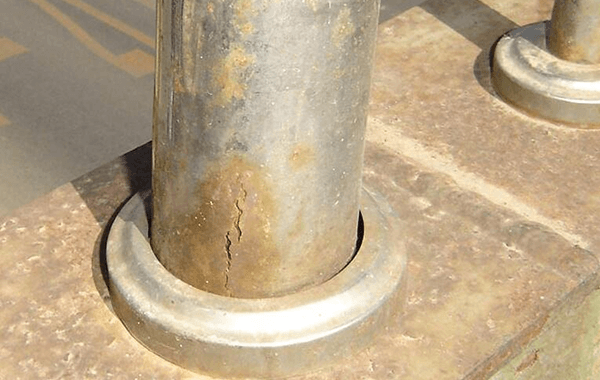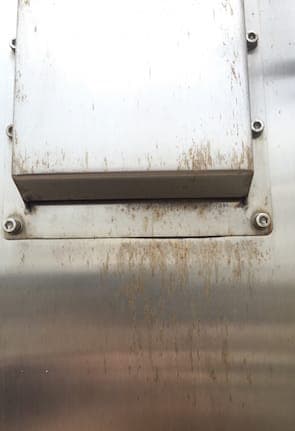

If you would like to learn more about these specialist grades, read our previous blog post: Two Grades of 316 Stainless Steel. Masteel is the UK’s leading supplier of 316 stainless steel in standard, low- and high-carbon formats. We now see 316 stainless steel routinely diagnosed for processing and construction applications as varied as:Īs a general rule: 316 stainless steel is better suited for applications with high amounts of corrosive elements, or where the component will be continuously submerged in water. Each of these elements was problematic for standard stainless grades, so a novel solution with improved anti-corrosion properties was developed: 316 stainless steel. The steeping of raw and pressed fiber materials also generates excessive amounts of humidity which can accelerate corrosion and cause premature mechanical failure. Sulfur compounds in paper processing are highly corrosive, causing a similar form of mechanical pitting to chloride corrosion. 316 stainless steel generally outperforms type 304 in coastal and marine applications, including offshore construction and coastal architectural fascia.Īlthough it is now a common solution in marine applications, 316 stainless steel was originally developed for industrial processing in pulp and paper mills. The leading solution to the challenge of steel grades and seawater corrosion is to utilize increased levels of anti-corrosive elements such as molybdenum. Sodium chloride (NaCl) in seawater actively attacks the iron (Fe) molecules in submerged alloys, causing pitting corrosion. So, when is 316 stainless steel more suitable than type 304?ģ16 stainless steel is often referred to as a marine grade alloy due to its outstanding resistance to chloride corrosion.

For example, it boasts vastly superior resistance to chloride and sulfide corrosion. This elevates the corrosion-resistant properties of the alloy even further. The main difference between these two austenitic grades is the presence of as much as 3% molybdenum (Mo) in 316 stainless steel compared to the trace levels of type 314. Chromium, meanwhile, is the main element responsible for the corrosion-resistant properties of stainless steels. Nickel enhances the low-temperature performance of stainless alloys, generally imparting good ductility to avoid brittleness in cryogenic conditions. These two are chemically similar, containing comparable levels of nickel (Ni) and chromium (Cr). This makes austenitic grades like 316 stainless steel uniquely suited to cryogenic applications, albeit with limited formability options.ģ16 stainless steel is, in turn, the second most common austenitic grade behind type 304. Austenitic stainless grades are known for excellent thermodynamic performance retaining a characteristic face-centered cubic (FCC) crystal structure at all temperatures. It has low weldability and heat resistance, but average ductility makes it ideal for making valves, gears, and other machinery parts.There are five primary subfamilies of stainless steel, yet just one of them comprises as much as two-thirds of global stainless production. Containing 12 – 30% chromium with about 4 – 7% nickel and can undergo various heat treatments for better strength-to-weight ratios. Classified as having a dash 17 (17-) grade and are often referred to as semi-austenitic. It has average ductility and low heat resistance. Mainly used for manufacturing pipes, tubes, and tanks thanks to its high weldability. Duplex stainless steel offers added strength and better resistance to stress, corrosion, cracking, and pitting. Classified as the 2000 series, duplex alloys contain a mixture of austenite and ferrite with about 22% chromium and around 5% nickel.

It has low weldability, ductility, and heat resistance and is mainly used for fasteners and pump shafts. It contains 11 – 17% chromium with less than a percent of carbon. Also classified as the 400 series, martensitic stainless steel is high-strength and can be hardened by heat treatment. Its low weldability, average ductility, and high heat resistance make it great for appliance trims and cooking utensils. Brewing facilities Environments with increased exposure to alkalis and acids These increased resistances also help to take the guesswork out of cleaning and allow you to clean your stainless more often using stronger cleansers and detergents with little worry of damage or altering the appearance of the stainless steel. This classification is magnetic but is also non-heat-treatable. Classified as the 400 series, this type of stainless steel has around 10-30% chromium and is stronger than carbon steel. Commonly used in making culinary and chemical equipment. This classification is non-heat-treatable but has high weldability, ductility, and heat resistance. Classified as the 200 or 300 series, austenitic stainless steel is often composed of 17 – 30% chromium and about 8 – 25% nickel. While stainless steel has many different grades, it’s usually divided into 5 main classifications based on its alloyed microstructure: What are the different stainless steel grades?


 0 kommentar(er)
0 kommentar(er)
